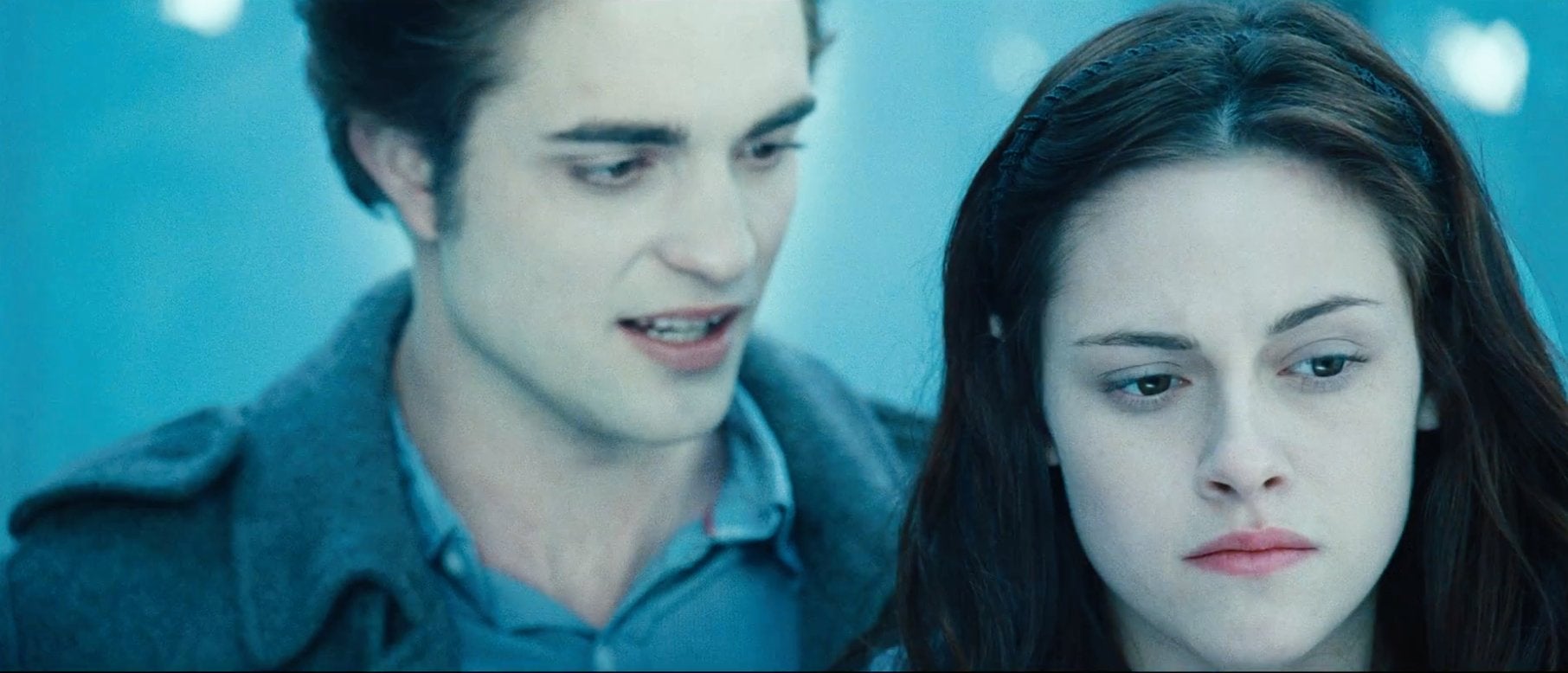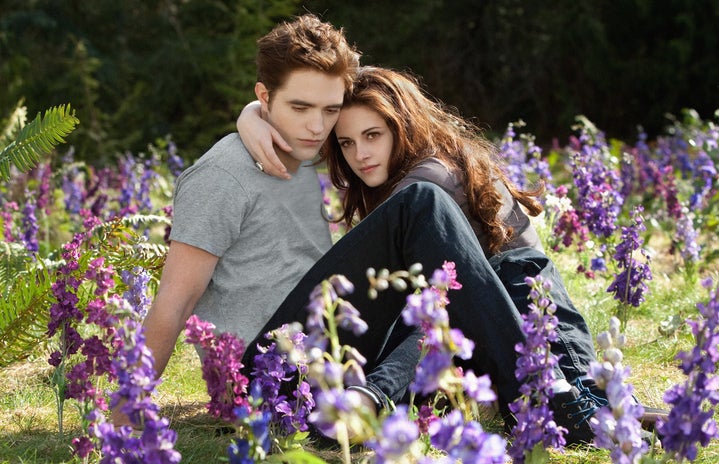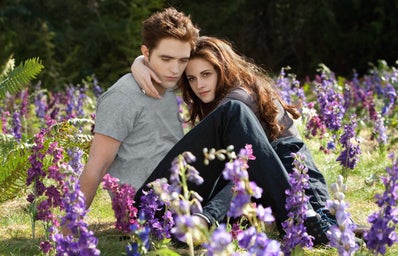Everyone normal loves Twilight. What’s not to love, right? Angsty emo pale teen meets another angsty emo pale teen (or so he would have us believe) and the rest is history. He was a vampire, she was fresh meat, can I make it any more obvious? The release of the first movie in 2008 after the publication of the first book in 2005 set the world ablaze—truly a cultural reset. Bella was the 2000s. Edward was the Y2K it-boy. Again, what’s not to love?
Stephenie Meyer, that sneaky girl, hid some little freaky Easter eggs for us fans in her hit series. They are some really weird Easter eggs, guys. Hold on tight, spider monkey — we’re in for a wild ride.
For some context, Stephenie Meyer wrote the Twilight series beginning in 2005 with the first Twilight book, when the story idea came to her in a dream (classic). She imagined a sparkly boy and a normal human girl talking in a meadow. Honestly, respect. She really committed to the bit and made her dream come true. The last book in the series was written in 2008, so she was churning these bad boys out.
Also, she’s Mormon. That wouldn’t normally be important, but she really made it everyone else’s business. This leads me to my first point — the entire series is a metaphor for a non-believer turning to the church of Latter-day Saints. Think about it: an independent young girl (who feels lost, awkward, and out of place in a contemporary world) meets a clan of very white, controlled, virtuous, and beautiful vampires. These vampires, who are supposedly better than all the other ones because they’ve chosen a more “enlightened” path of immortal existence by not eating humans, are in contrast with the Volturi, who, according to John Granger, seem to be a “thinly disguised Roman Catholic Church, the ‘Whore of Babylon’ to Joseph Smith, Jr., and his nineteenth-century followers.”
Bella is led from her wayward life by Edward, a respectful yet stalker-ish immortal teen from the early 1900s, and into the warm arms of a family that has chosen to follow a more elevated lifestyle than their immoral counterparts. One member of this family, Rosalie, has a particularly pertinent past. Rosalie’s main character development rolls around when she’s trying to convince Bella to stay human so that she can pursue the dreams that were so brutally stolen from Rosalie—a family. A deeper look into Rosalie’s character reveals that she is crucial to Meyer’s attempt to weave Mormonism into Twilight. She was born in Rochester, which just happens to be the birthplace of Joseph Smith, the founding father of American Mormonism. Rochester is where Smith found the golden plates that would come to form the basis of the LDS church; this spot is a sort of Mecca for Mormons in that it’s a highly valuable location to the faith, a touchstone of the foundation of the Mormon Church. Conveniently, Rochester is known for being overcast and gloomy—a perfect place for the Cullens to return to when they exhaust other sunless towns.
There are a ton of other hidden nuggets that are buried to entrench Mormonism in the Twilight universe. Do your own research, come to your own conclusions, and let me know what you come up with, dear reader. I’m curious to see where you land on this.

Aside from the direct connection to Mormonism, there’s a whole caboodle of interesting things going on under the surface. The purity culture values that are interwoven throughout the entire series are in some places painfully obvious, like when Edward won’t take Bella’s virginity until she marries him. The saga features this conflict on the basis that Edward taking Bella’s virginity (and therefore her humanity) would be like taking her soul. When did a woman’s sexuality become synonymous with her soul? Yikes.
Also, I just have to mention it here. It’s really weird that werewolves were imprinting on children (I’m looking at you, Quil). Do y’all remember when Jacob drove to a park (a place notorious for being full of children) and tried to force an imprint on someone? I feel bad for Resume or Renaissance or whatever her name was. I’m not entirely sure what nefarious intentions were behind this artistic choice; nevertheless, this part of the books makes my stomach turn.
Meyer also happened to name a handful of the characters after her siblings and relatives, the most notable being Jacob, her brother. Stephenie, you dirty dog, naming one of the main love interests after your brother…To make it worse, there’s a myriad of theories that Twilight is a self-insert story, as in Meyer has imagined that she herself is Bella. Kind of awkward to write yourself as Bella and then use your own brother’s name for the moody, sexy, himbo werewolf. But what do I know? Clearly she did something right, because the success of the Twilight series earned her upwards of $40 million.
Look, I grew up in a big Twilight household. When Breaking Dawn: Part 2 came out, my mom hosted a Bella-themed wine party at our house for all the neighborhood fanatics. The books were mandatory reading by age 13 to be a true member of the Sommer family. With that being said, I can recognize that the saga has some…interesting pitfalls. These aforementioned pitfalls won’t stop me from rewatching New Moon just for that one scene, y’all know what I’m talking about. There’s a possibility…



